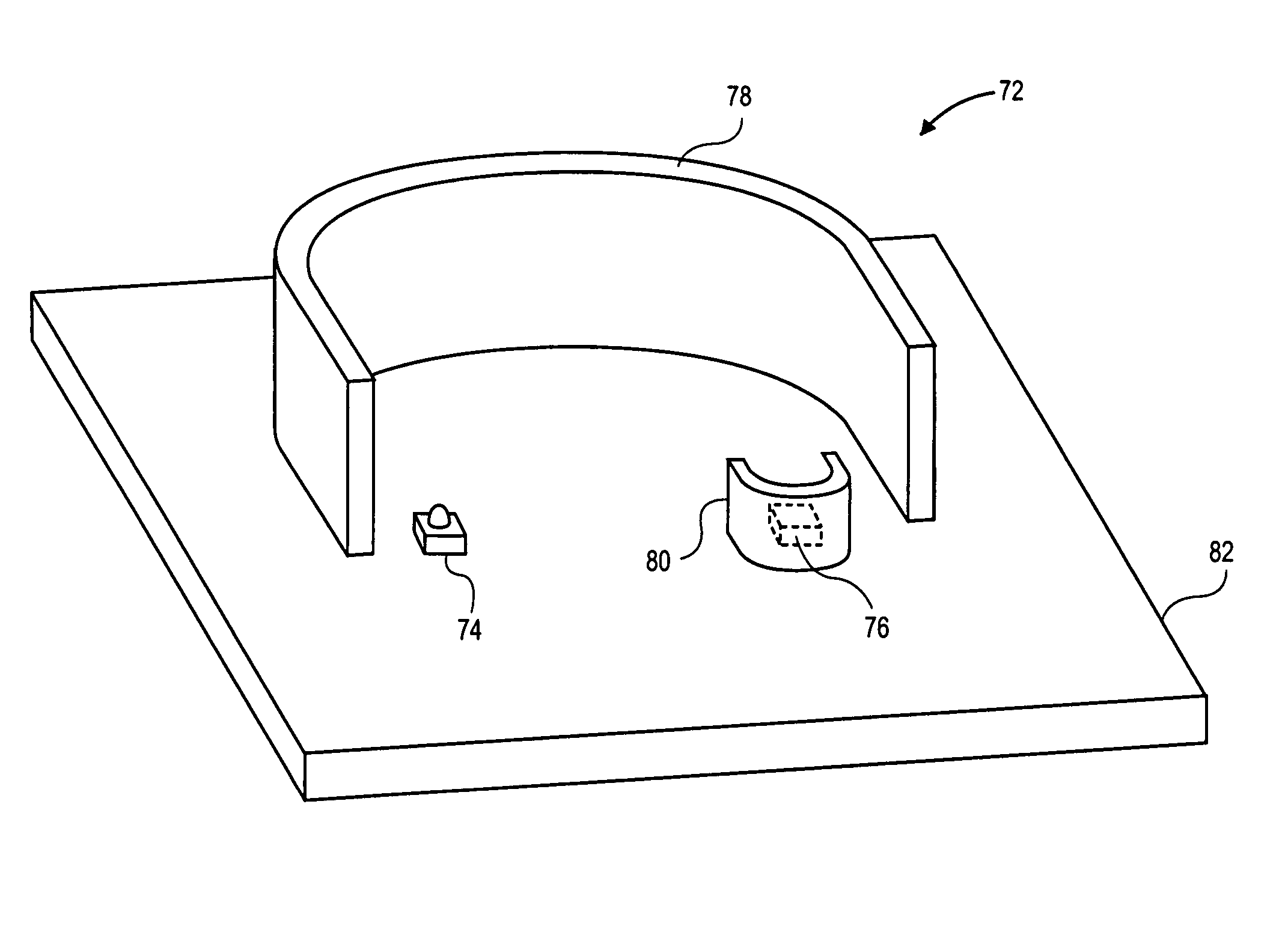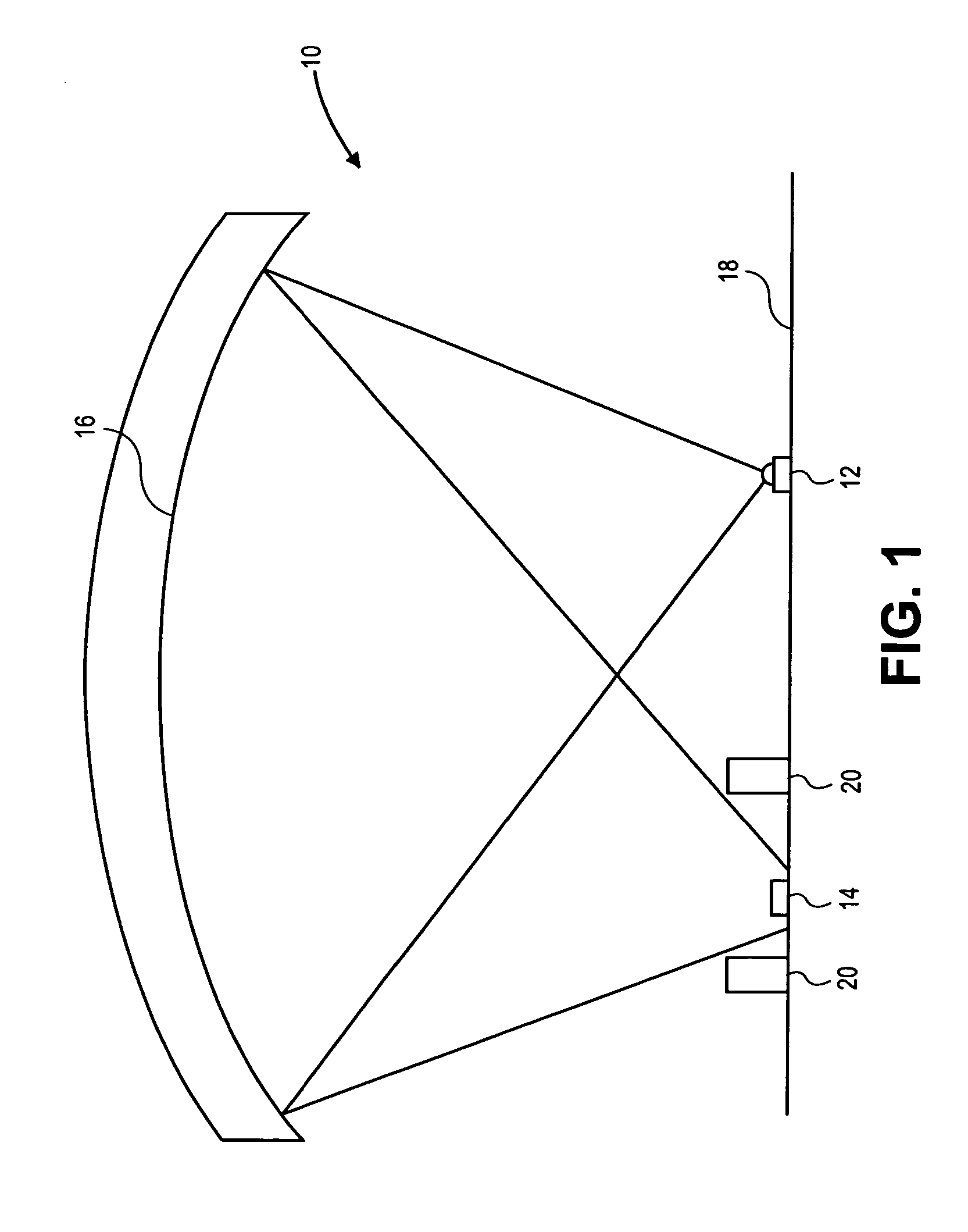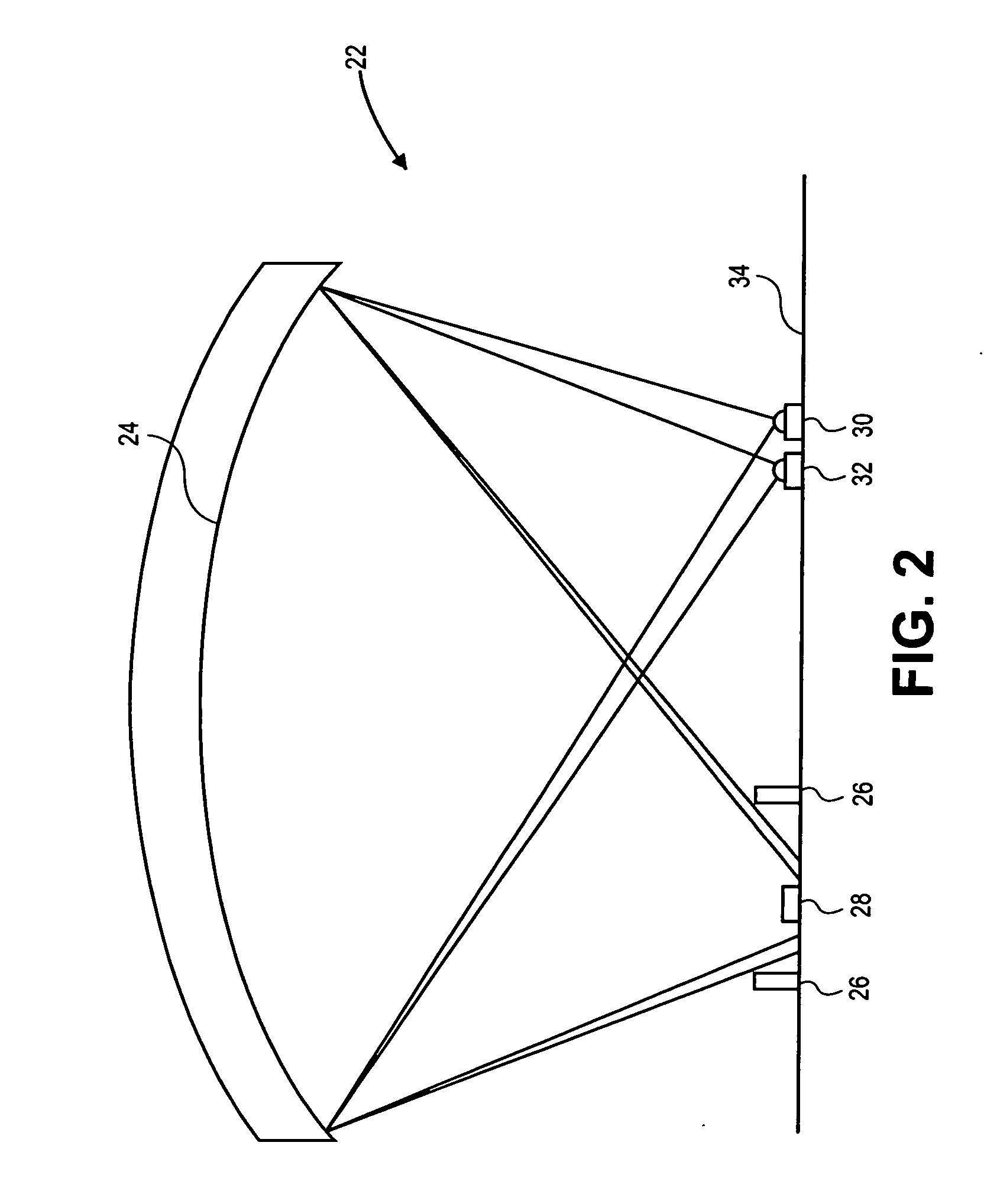Smoke detector and method of detecting smoke
a detector and smoke detector technology, applied in the direction of fire alarms, fire alarm smoke/gas actuation, instruments, etc., can solve the problems of high false alarm rate, high complexity of ionization-type smoke detectors, and large sensitivity of detectors to dust and dirt accumulation, etc., to achieve low cost, small size, and low complexity
- Summary
- Abstract
- Description
- Claims
- Application Information
AI Technical Summary
Benefits of technology
Problems solved by technology
Method used
Image
Examples
first embodiment
[0033]FIG. 1 illustrates a cross-sectional view of a portion of a smoke sensing chamber 10 of a smoke detector according to the present invention. The smoke sensing chamber 10 typically has all of the openings leading thereto covered at least by a screen (not illustrated) that prevents bugs from entering the chamber 10. However, the smoke sensing chamber 10 typically does not have any predefined sidewalls other than where the housing of the smoke detector that includes the sensing chamber 10 happen to be positioned.
[0034] The smoke sensing chamber 10 includes a light source 12 that, in FIG. 1, takes the form of a Light Emitting Diode (LED). The light source 12 illustrated in FIG. 1 is configured to emit, from a first area thereon, light in a specified wavelength range. According to certain embodiments of the present invention, the specified wavelength range includes the full visible spectrum and / or overlaps at least somewhat with the infrared (IR) and / or ultraviolet (UV) ranges. Acc...
second embodiment
[0040]FIG. 2 illustrates a cross-sectional view of a portion of a smoke sensing chamber 22 of a smoke detector according to the present invention. The smoke sensing chamber 22 includes a reflective surface 24, a shroud 26 and a light sensor 28 that are similar to the reflective surface 16, shroud 20 and light sensor 14 illustrated in FIG. 1, respectively.
[0041] The smoke sensing chamber 22 illustrated in FIG. 2 also includes a first light source 30 and a second light source, each of which is analogous to the light source 12 illustrated in FIG. 1 at least in the sense that each may emit V, near-UV, visible, near-IR and / or IR light. According to certain embodiments of the present invention, the first light source 30 is configured to emit light in a first wavelength range onto the reflective surface 24 and the second light source 32 is configured to emit light in a second wavelength range onto the reflective surface 24.
[0042] Typically, the second wavelength range differs from the fir...
third embodiment
[0044]FIG. 3 illustrates a cross-sectional view of a portion of a smoke sensing chamber 36 of a smoke detector according to the present invention. In FIG. 3, a first light source 38, a second light source 40, a first light sensor 42 and a second light sensor 44 are all surface-mounted on a circuit board 46. Positioned directly opposite to the circuit board 46 is a reflective surface 48.
[0045] According to certain embodiments of the present invention, the first light source 38 includes an LED that emits light in a first wavelength range (e.g., UV light) and the second light source 40 includes an LED that emits light in a second wavelength range (e.g., IR light). According to some of these embodiments, the first light sensor 42 includes a photodiode that is configured to detect the light in the first wavelength range and the second light sensor 44 includes a photodiode that is configured to detect the light in the second wavelength range.
[0046] Although the first light source 38 and ...
PUM
| Property | Measurement | Unit |
|---|---|---|
| diameter | aaaaa | aaaaa |
| surface area | aaaaa | aaaaa |
| surface area | aaaaa | aaaaa |
Abstract
Description
Claims
Application Information
 Login to View More
Login to View More - R&D
- Intellectual Property
- Life Sciences
- Materials
- Tech Scout
- Unparalleled Data Quality
- Higher Quality Content
- 60% Fewer Hallucinations
Browse by: Latest US Patents, China's latest patents, Technical Efficacy Thesaurus, Application Domain, Technology Topic, Popular Technical Reports.
© 2025 PatSnap. All rights reserved.Legal|Privacy policy|Modern Slavery Act Transparency Statement|Sitemap|About US| Contact US: help@patsnap.com



